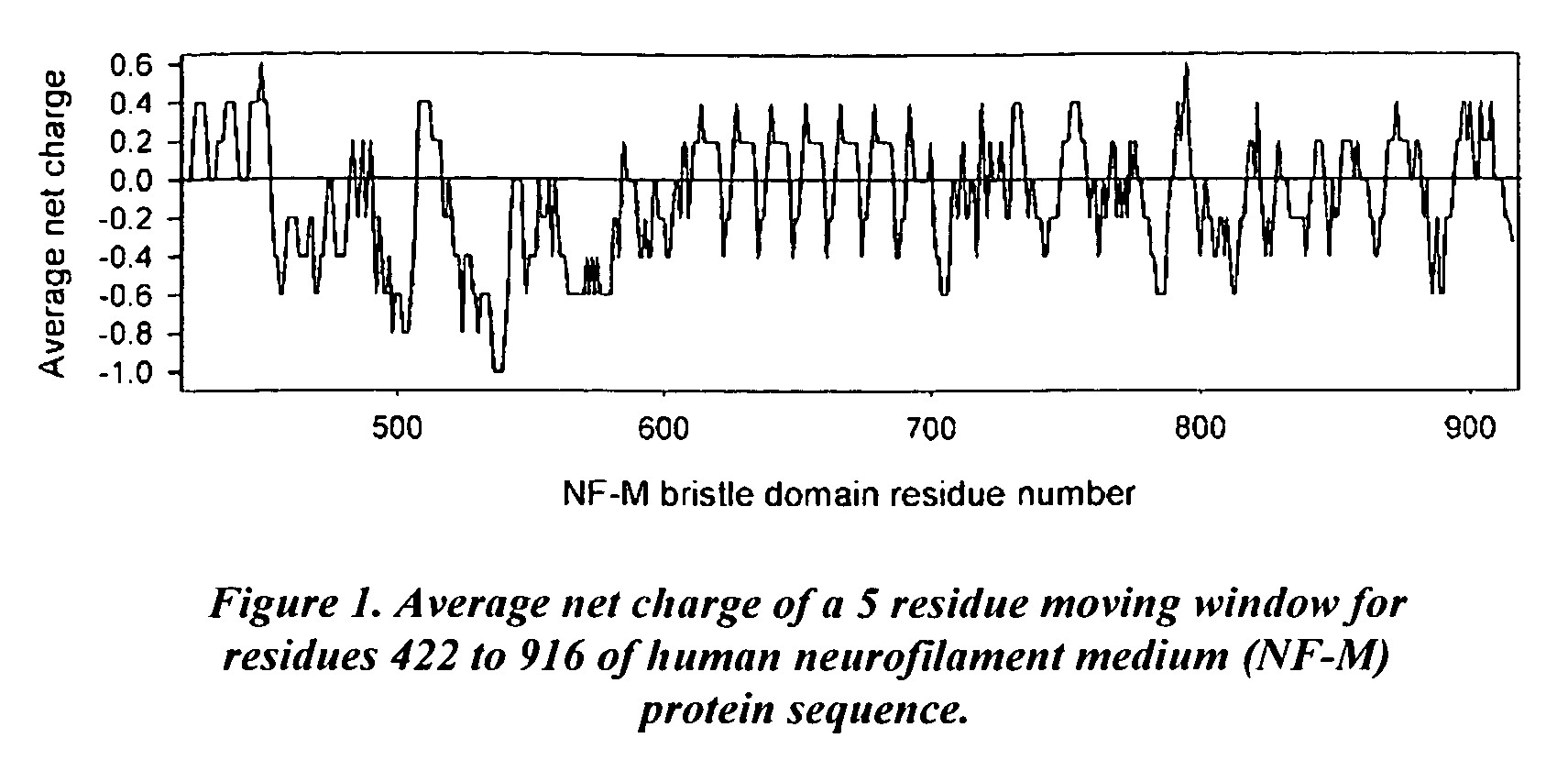Entropic bristle domain sequences and their use in recombinant protein production
a bristle domain and entropic technology, applied in the field of compositions and methods can solve the problems of large percentage of proteins identified via different genome sequencing efforts that are difficult to express and/or purify as recombinant proteins using standard methods, reduce the success level between cloned and crystallized, and reduce the cost of recombinant protein production
- Summary
- Abstract
- Description
- Claims
- Application Information
AI Technical Summary
Benefits of technology
Problems solved by technology
Method used
Image
Examples
example 1
Use of Neurofilament Triplet M Protein (NF-M) in an Entropic Bristle Domain Vector.
[0179]The heterogeneity in the charge distribution of the human NF-M protein sequence was determined (shown below). The observed heterogeneity of the sequence suggests that EBDs with different characteristics may result for different regions of the sequence. For example, a 422-600 fragment is predominantly negatively charged. This fragment could be used as a basis to design EBDs for negatively charged proteins. The charge distribution in the 601-916 fragment is very heterogeneous. It can be used as a basis to design EBDs both for positively- and negatively-charged proteins.
[0180]Cloning of EBD sequence: We obtained the full-length cDNA for human NF-M from Origene Technologies (Rockville, Md.) and cloned the coding region for a 494-residue EBD sequence (residues 422 to 916 of the NF-M protein) into a pMALc2E vector from which the maltose-binding protein coding region had been deleted. Restriction site...
PUM
| Property | Measurement | Unit |
|---|---|---|
| diameter | aaaaa | aaaaa |
| diameter | aaaaa | aaaaa |
| solubility | aaaaa | aaaaa |
Abstract
Description
Claims
Application Information
 Login to View More
Login to View More - R&D
- Intellectual Property
- Life Sciences
- Materials
- Tech Scout
- Unparalleled Data Quality
- Higher Quality Content
- 60% Fewer Hallucinations
Browse by: Latest US Patents, China's latest patents, Technical Efficacy Thesaurus, Application Domain, Technology Topic, Popular Technical Reports.
© 2025 PatSnap. All rights reserved.Legal|Privacy policy|Modern Slavery Act Transparency Statement|Sitemap|About US| Contact US: help@patsnap.com

